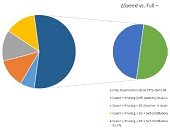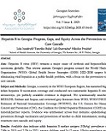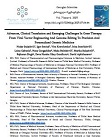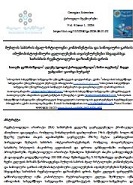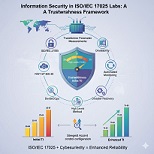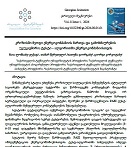ELECTROMAGNETIC RADIATION SAFETY ISSUES OF THE FIFTH GENERATION (5G) MOBILE NETWORKS
Downloads
Today's telecommunication infrastructure is faced with the solution of the main challenges, such as: solutions to the growing demands of users - fast and high-quality data transfer in the network, insufficient channel bandwidth and network overcrowding, exponential growth of the number of devices connected to the network. The transition from generation to generation of mobile connectivity is aimed at improving the speed and quality of mobile data transmission. The evolution of mobile communication systems (1G, 2G, 3G, 4G, 5G, G-Generation, in the nearest future 6G, 7G) has come a long way. The existing four generations took the connection to a new level, the main purpose of 3G and 4G was to increase the speed of mobile data transmission. The new technology of the fifth generation - 5G (Fifth Generation) mobile connection makes broadband mobile data transfer possible. 5G is an evolution of previous generations of mobile technology. 5G will accelerate the development of the "Internet of Things". The transition from 4G to 5G will affect practically everyone who uses a mobile connection. The fifth generation-5G network is a new generation wireless internet technology, which, compared to existing technologies, will significantly increase the mobile Internet speed, it will reduce the delay and take the most important industries to a completely new level: health care, education, business, agriculture, infrastructure and more. which will significantly strengthen the country's economy. In 5G, a large volume of data is transmitted over a shorter distance than in 4G LTE (Long Term Evolution), which increases the data transmission speed of the entire network and the stability of the connection, even when the subscriber moves. 5G will use millimeter waves (mmW) in the 30GHz-300GHz range. Millimeter spectrum waves used in 5G can spread in free space, use of a new frequency range allows serving a large number of devices with less power consumption. From the day of appearance mobile phones, they have raised some concerns about the potential health risks associated with the use of mobile phones and the placement of base stations near homes. In order to reduce the load on the networks, provide fast connection and cover a large area, the 5G network requires more transmitter-base stations than the 4G network, What causes a negative mood in society, the question arises: How high will the radiation created by the base stations be and will it be harmful to humanity? 5G can operate in the low, mid or highband millimeter wave bands ranging from 24 GHz to 66 GHz. In the existing active cellular mobile connections, for the operation of modern telecommunication devices, have been used such low frequencies (frequencies below 6 GHz) as are needed for the operation of the currently active 5G mobile connection (700 MHz, 2600 MHz and 1800 MHz, 3400-3600 MHz frequency range, a popular worldwide frequency is 3.4 GHz to 3.8 GHz). The principle of operation of the base station is different from the principle of operation of stations of previous generations. A key feature of the 5G wireless standard is that it will use beamforming technology, which allows frequencies to be sent to different users simultaneously, unlike 4G networks, where the signal emitted by the base station spreads over a large area. The station emits only 20 watts, it is not concentrated in space and decreases very quickly, for example, the width when it reaches the roof is already quite weak. 5G radiation norms comply with the International Commission on Non-Ionizing Radiation Protection (ICNIRP) and will be lower (200-1000 microwatts) compared to the norms of the previous generation.
Downloads
Ivana Marić, Shlomo Shamai, Osvaldo Simeone, Theoretic Perspectives on 5G Systems and Beyond, Cambridge University Press, Online ISBN: 9781108241267, April 2022, p.756.
Волков А.Н., Мутханна А.С., Кучерявый А.Е. Сети связи пятого поколения на пути к сетям 2030. Информационные технологии и телекоммуникации, СПБ, 2020, т. 8, №2 . стр. 32- 42.
https://shorturl.at/myBZ4; https://rb.gy/nsdg9; https://www.shorturl.at/shortener.php; https://www.icnirp.org/en/differences.html; https://rb.gy/fhxm7; https://rb.gy/cxrua;
https://rb.gy/qfpcs; https://rb.gy/2d81j https://shorturl.at/anH04; https://shorturl.at/ehqO1;
https://shorturl.at/cAIKO; https://shorturl.at/cRSW4; http://surl.li/jdqfr.
Copyright (c) 2023 Georgian Scientists

This work is licensed under a Creative Commons Attribution-NonCommercial-NoDerivatives 4.0 International License.



































